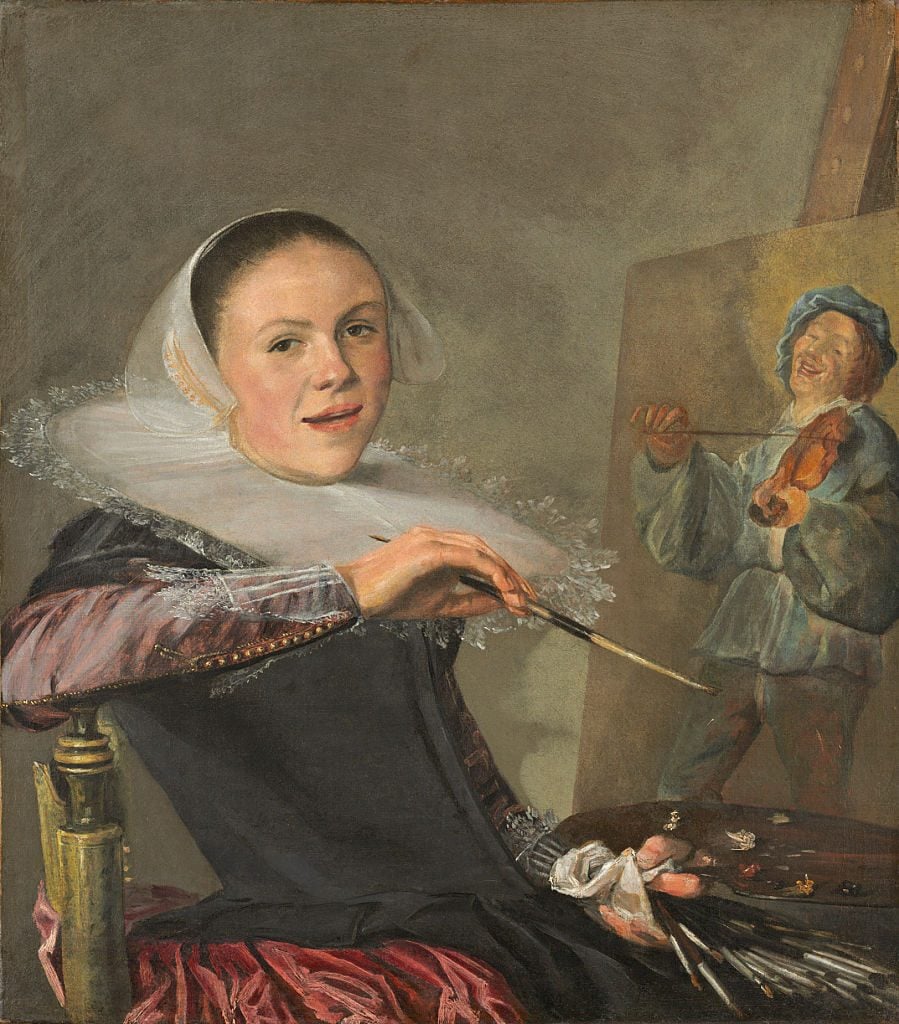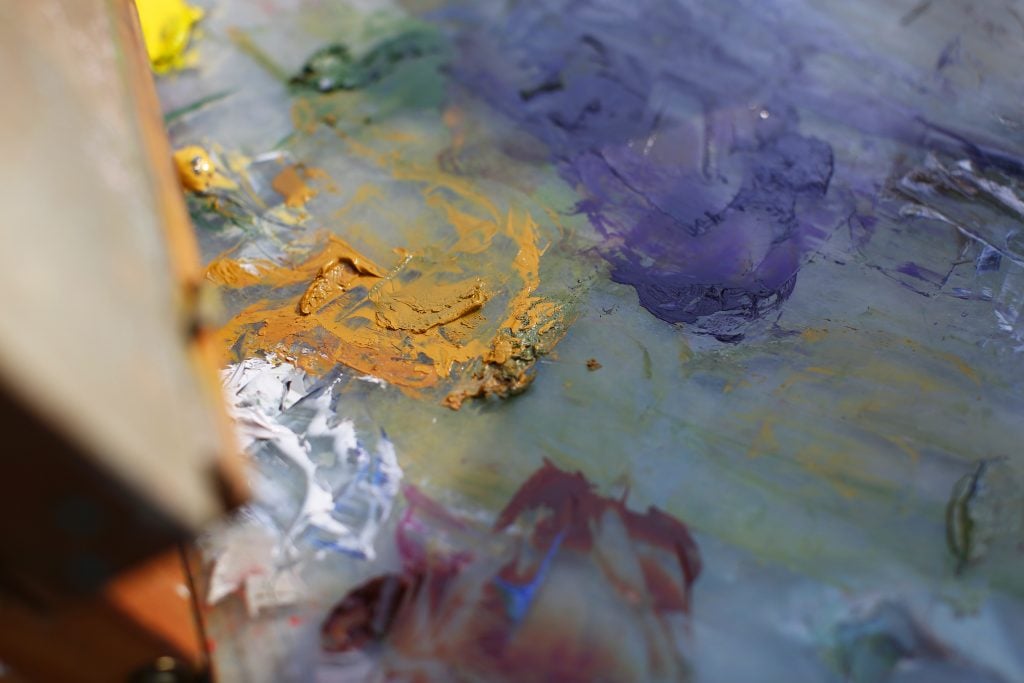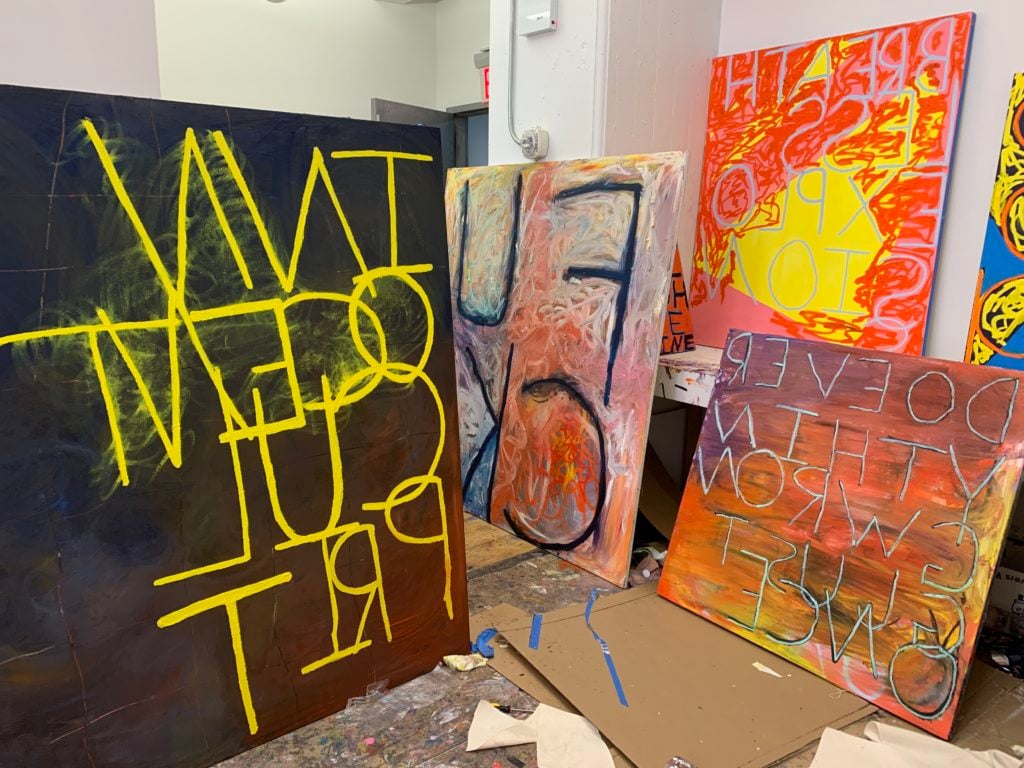Art World
Ask the Experts: I’m Just Starting Out as an Artist. How Much Should I Charge for My Art?
We asked experts how artists should put a price on their work—and they gave surprisingly specific answers.

We asked experts how artists should put a price on their work—and they gave surprisingly specific answers.

Francesca Gavin

Prices are a lot more than just numbers. The price of artwork is the result of complex calculus and reflects an artist’s position in the food chain.
The stakes are high: Get it right and you might be able to make a living doing what you love; get it wrong and you risk turning off your audience altogether. (No one wants to collect the Emperor’s New Clothes.) For artists who are new to the game—and particularly those without gallery representation—it is something to consider slowly and strategically in order to get the temperature just right.
Once upon a time, when artists were considered artisans, pricing was more straightforward. In contracts used in the late Medieval and early Renaissance eras (yes, artists used contracts back then), prices were usually based on a formula that accounted for the cost of materials used, labor time, and scale.
With the explosion of the Dutch art market in the 17th century, which coincided with the rise of contemporary capitalism, guilds commissioned artworks for fixed sums. A hierarchy of value developed based on genre, with religious and history paintings priced higher than still lives and landscapes.

Judith Leyster, Self-Portrait (c. 1630). Photo by Art Images via Getty Images
Gradually, technical skill—and the value of an artist’s signature—began to supplant material and subject matter as the most important determinant of price. By the 19th century, the cult of the creative, bohemian genius became firmly established—and questions of price and value started to get a lot more confusing.
How should an artist getting their start tackle these questions today? First, speak to your contemporaries: artists in your network, friends working with galleries. Do your research. Ask for price lists at exhibitions (and be prepared to be turned down at times). Identify artists who you feel are at a similar place in their careers and ask them about their prices.
In general, there is one golden rule: keep it low. “It’s very important when you start out as an artist who is just beginning to exhibit, that the prices are at a level where your own peers and generation can afford to buy it,” Jesper Elg of Copenhagen’s V1 Gallery notes. “I’m thinking about what it costs to buy an expensive pair of, say, Acne jeans. If you can buy a nice drawing for the same price, I’d prefer to get the drawing.” He suggests thinking of a price and reducing it by 10 percent, so you always reluctantly feel like you are doing the buyer a favor.
When an artist shows with a gallery, they are essentially playing the gallerist 50 percent to represent and promote their work. Artists often arrive with an already established price point that reflects engagement from collectors, critics and colleagues they have developed from previous self-organized shows. That price can vary immensely.
At the moment when you might first be considered for gallery representation, Will Jarvis of London’s The Sunday Painter recommends setting your price around $1,500, depending on scale. “Be open about your own naivety or unsureness,” he adds. “It’s much better to go and say, ‘Look. I’m quite green at this. This is an opportunity for me, but I’m very conscious of not doing the wrong thing.’”

The Plein Air Art Walk at Mohonk Preserve in New Paltz, New York, featuring artists from Roost Studios. Photo ©2020 Jeff Goldman Photography, LLC.
Medium bias is also a thing. Painting is still the top of the pile when it comes to market value. As one anonymous gallerist points out, “It’s a bit unjust. I think it’s a bit ridiculous to say that painting in general is more expensive or should be. The market does define the prices and we all know it’s not a secret painting is easier to sell than installation or sculpture.”
Scale also comes into play—especially for galleries that need larger works at higher prices in order to pay the rent on their own spaces. Most galleries take 50 percent of an artwork’s sale, after any framing and production costs. Photography, by contrast, has a more established price structure. As Aron Gent of Document gallery in Chicago explains: “It comes down to size of the print, the edition number, the framing costs, and finally, the market demand for an artist’s work.”
Overpricing can be detrimental to an artist’s longevity. Short-term success can come with a real danger of turning your work into a speculative object, which never ends well. “I am very inclined to get turned off if it feels like the pricing is already what feels to be too high, especially if it’s an artist who I’ve never heard of or who is just quite fresh,” advisor Arianna Nourse observes. “Generally speaking, if something is under $5,000, there’s a difference in psychology. Nobody, no matter how much money they have, wants to feel like they’re paying more than they should.”
There’s another big reason to proceed with caution: you can never go backward. Periodically raising prices by 10 to 20 percent, particularly when represented by a gallery, occurs at intervals based on a number of factors including collector demand, institutional recognition, critical reputation, the cost of production, and the number of shows an artist has done.
“The problem with going high too fast is that if the market becomes unsustainable, it is problematic to lower an artists’ pricing,” says San Francisco dealer Jessica Silverman. “If you price solely because the market allows for the pricing to go up, it usually ends badly. I would prefer to have work be priced appropriately for the artist than fit the demand for the work.” The only way to work around this is discounts—which range from between 10 and even 30 percent in the current climate. Offering a discount provides a small margin to lower prices, without decimating an artist’s demand.

Sam Jablon’s studio. Photo courtesy of the artist.
In his 2005 book Talking Prices, economist Olav Velthuis tried to get an empirical handle on the process of pricing contemporary art. He noted that “language, gossip, stories, and rituals of daily life” fed into an artist’s perceived worth as much as “museum exhibitions, publications, or other sources of praise.” Collectors gossiping about new discoveries has fueled many emerging careers, while stories of bad behavior—like, say, a wasted artist exposing himself at a gallery dinner—can derail success just as quickly.
Velthuis also noted that galleries, much like restaurants, often have a set price range that their clientele is comfortable with. “‘Expensive’ galleries are expensive because they sell works of ‘expensive’ artists (old, foreign, male artists, for instance),” he writes. “This implies that one function of galleries is to ‘pass on’ price-increasing (or price-decreasing) characteristics of artists to the general public.” Price decreases also harm the reputation of the gallery—hence why artists can get dropped if their market slips.
The past year has turned audiences’ relationship to prices upside down. Visible price tags in online viewing rooms and art fairs are increasing transparency and undoubtedly changing how work is being received. NFTs that track every link of the ownership chain (and place great value on the work of artists from outside the traditional art world) takes this shift even further.
Meanwhile, the egalitarian nature of something like the Artist Support Pledge also lifted some of the issues of pricing off the artist. This initiative created by British artist Matthew Burrows involved artists selling works that were priced at £200/$200/€200 or lower, no matter how established the creator. It enabled artists to engage with their audience, and support their contemporaries, on equal footing.
There is no question that inequality is baked in when it comes to art pricing. But the best way to make it through is to remember that slow and steady wins the race. “It’s not like the conventional material world where things are of a set value,” Jarvis notes. “It’s a guessing economy.”